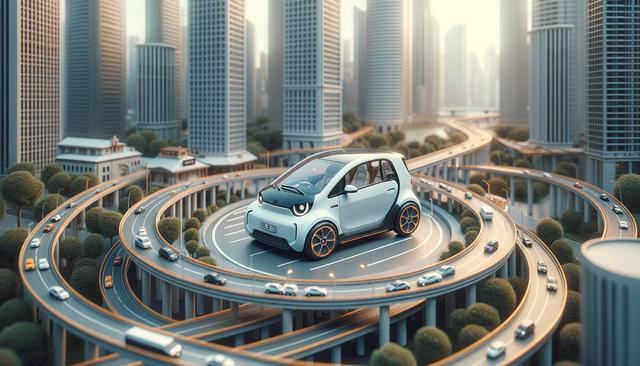
Exploring the Rise of Small Electric Cars in Urban Mobility
Why Small Electric Cars Are Gaining Popularity
As cities become more congested and the demand for eco-friendly transportation increases, small electric cars are emerging as a smart alternative to traditional vehicles. These compact electric vehicles (EVs) offer several benefits that align with the needs of urban dwellers. From easier parking to lower emissions, their appeal is growing rapidly among environmentally conscious drivers and those looking for practical commuting options.
One of the primary reasons behind their popularity is affordability. Smaller EVs typically come with lower price tags compared to larger electric or gasoline-powered vehicles, making them more accessible. Additionally, they are often cheaper to maintain due to their simpler mechanical systems and fewer moving parts. This cost-effectiveness is especially attractive to young professionals, students, and retirees living in cities.
Another significant factor is government support. Incentives such as tax credits, rebates, and reduced registration fees are encouraging more people to consider electric options. In many urban areas, small electric cars also benefit from reduced tolls and access to restricted driving zones, further enhancing their practicality.
Design and Performance for City Life
Small electric cars are not just about size—they are thoughtfully designed to meet the demands of city life. Most models are built with tight turning radii, making them ideal for narrow streets and tight parking spaces. Their lightweight structures contribute to energy efficiency, allowing for better mileage per charge.
Despite their compact dimensions, many small EVs offer surprising comfort and modern features. Common characteristics include:
- Touchscreen infotainment systems
- Smartphone integration
- Rearview cameras and parking sensors
- Regenerative braking systems
These features make city driving more convenient and enjoyable. Moreover, the quiet operation of electric motors reduces noise pollution, contributing to a more pleasant urban environment.
While their range may be limited compared to larger EVs, most small electric cars offer sufficient mileage for daily commutes and errands. Charging infrastructure is also improving in many cities, with more public stations and residential charging options becoming available.
Environmental and Economic Benefits
One of the strongest arguments for small electric cars is their positive environmental impact. By producing zero tailpipe emissions, these vehicles help reduce urban air pollution—a major concern in densely populated areas. They also contribute to lowering greenhouse gas emissions when powered by renewable energy sources.
In terms of energy consumption, small EVs are highly efficient. They require less energy to move due to their reduced weight, which translates to lower electricity usage per mile. This efficiency not only saves money but also supports broader energy conservation goals.
Economically, small electric cars can lead to substantial savings over time. Key cost-saving aspects include:
- Lower fueling costs compared to gasoline
- Reduced maintenance expenses
- Access to financial incentives and tax breaks
- Potential insurance discounts for electric vehicles
These financial advantages make them a compelling choice for budget-conscious consumers who also value sustainability.
Challenges and Considerations
While small electric cars offer many benefits, there are also challenges to consider. One of the main limitations is range. Most compact models have a shorter driving range than larger EVs or traditional cars, which may not suit long-distance travelers or those in areas with limited charging facilities.
Charging infrastructure, although improving, can still be inconsistent. Apartment dwellers or those without access to a private garage may find it difficult to charge their vehicles regularly. Public charging stations are not yet as prevalent as traditional fuel stations, which can lead to range anxiety.
Other considerations include limited cargo space and seating. Small electric cars typically have less room for passengers and luggage, which could be a drawback for families or individuals who frequently carry large loads. Additionally, while safety standards are generally met, some consumers may prefer larger vehicles for added protection in collisions.
Despite these challenges, innovation in battery technology and urban planning continues to address these concerns. Manufacturers are working on improving battery range and reducing charge times, which will likely enhance the appeal of small EVs in the future.
The Future of Small Electric Cars
The future looks promising for small electric cars as they become a key component of sustainable urban mobility. With growing environmental awareness, technological advancements, and supportive policies, the adoption of these vehicles is expected to rise steadily.
Automakers are investing in new models that improve on current limitations, such as range and charging speed. Urban planning is also evolving to accommodate electric mobility, with more charging stations, EV-friendly parking, and integration with public transportation systems.
Some emerging trends that could shape the future include:
- Car-sharing programs using small EVs
- Integration with smart city infrastructure
- Autonomous driving features in compact formats
- Increased use of recycled and sustainable materials in manufacturing
As cities strive to reduce congestion and emissions, the role of small electric cars is likely to expand. Their adaptability, efficiency, and environmental advantages make them a strong candidate for urban transportation solutions.
Conclusion: A Smart Choice for Urban Drivers
For urban residents seeking a practical, eco-conscious, and cost-effective mode of transportation, small electric cars present a compelling option. While they may not suit every lifestyle, their numerous advantages—especially in city environments—make them a valuable part of the evolving mobility landscape. As infrastructure and technology continue to improve, these compact vehicles are poised to play an even greater role in shaping the future of sustainable transportation.


